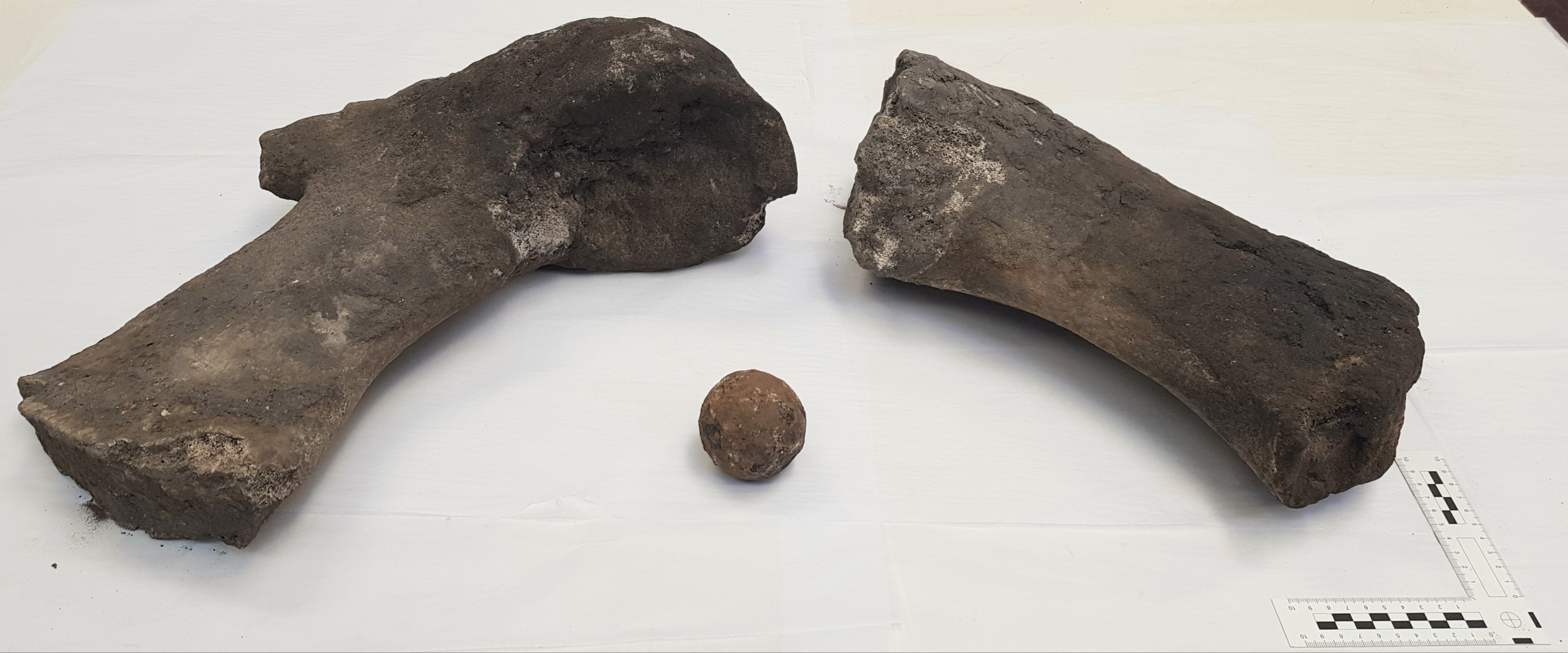And finally… Rare whale bones uncovered in tram project excavations
Archaeologists exploring Leith’s heritage as the Trams to Newhaven project recommences have unearthed an assortment of historic artefacts around Constitution Street which, along with archaeological investigations, have shed new light on the area’s history.
The relics, discovered during excavations carried out earlier this year in preparation for the tram works, range from rare whale bones to a cannonball thought to date back to the 17th century, as well as possible remnants of Leith’s 16th/17th century town defences.
Investigations also revealed evidence which could suggest the reclamation of parts of Leith foreshore – when land was extended into the Forth – happened earlier than first thought.

GUARD archaeologists record the remnants beneath modern services
Now, as the project’s main construction works on Leith Walk gets set to begin, as well as resuming excavations, archaeologists from GUARD Archaeology Ltd have shared images and their analyses of the remains found so far.
- Whale bones: Found on Constitution Street to the north of its junction with Baltic Street, a matching radius and ulna (part of the fin) of a large adult male sperm whale. The bones have yet to be carbon dated (this has been delayed due to the coronavirus pandemic), which will help explain how they ended up under the pavement in Leith. Amongst possible theories are that they were brought back in the 19th or 20th century as a memento as part of Leith’s historic whaling industry, that they came from the remains of a whale beached locally and were subsequently dumped there or that they were part of medieval deposits left there during the reclamation of the site in the 17th to 19th centuries, perhaps dating back to the medieval period.
- Cannonball: A small iron cannonball found in Constitution Street thought to date back to the 17th century - of a type used around the time of the Civil War when Constitution Street and Leith was refortified.
- Historic drainage: Excavations between Bernard Street and Tower Street have revealed important evidence relating to the reclamation of the area, including a large system of 19th century interlinked brick and stone box-drains, 18th century walls and a possible slipway. Evidence of 17th century clay pipes also indicates that the reclamation of the area could have occurred earlier than first thought.
- Town defences: Prior to lockdown the heavily truncated remains of a large stone wall were discovered running east to west under the junction of Bernard Street and Constitution Street. This may be part of the seawall for the 16th and 17th century town fortifications – the team will be investigating this when the project restarts.

Sperm whale matching radius and ulna bones and cannonball which is thought could date back to the 17th century
City archaeologist John Lawson said: “Our work to excavate the area as part of preparatory work for the Trams to Newhaven project has offered really interesting glimpses into the area’s history, over the past three to four hundred years, and we’re endeavouring to conserve that.
“Discoveries like the whale bones have been particularly fascinating and exciting. These bones provide a rare glimpse into and also a physical link with Leith’s whaling past, one of its lesser known maritime industries and one which in the 20th century reached as far as the Antarctic. Given the circumstances of how they were found it is possible that they may date back to the medieval period, and if so would be a rare and exciting archaeological discovery in Edinburgh.”
Bob Will of GUARD Archaeology Ltd added: “The Trams project will allow us to discover more about the history and development of Leith from the medieval period to the modern day. The work so far has already uncovered a range of exciting objects with a cannonball and the whale bone.”





















